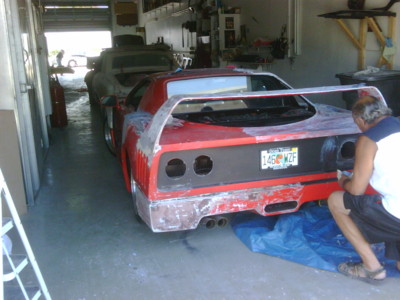An automobile looks great when it has a flawless body structure free from different kinds of impurities. If this is the case, even older models of car definitely look great. However, it is still subject to various kinds of problems. Aside from the usual mechanical troubles, its body can have dents, rust and scratches. To help fix these things, it is important to learn and understand DIY auto body repair.
Materials Needed
You can start this moderate task by gathering all the important materials. For this, you must have sheet metal snips, a sand bag as well as rubber and plastic hammer. Aside from these items, prepare a wire wheel, a fishing line and a pack of Bondo. Other items you need to complete this kind of job include medium and fine grit sandpaper, a ¼-inch wire screen mesh and a 3/8-inch drill. To cover important body parts, you must have lots of masking tape and newspaper. Lastly, prepare a clear coat, finish paint and a primer.
Steps
In case of dents, you need to remove the affected body part. After this, put it on top of a sand bag and then pound until it returns to its original shape using a rubber or plastic hammer. If you find rust on the body of your vehicle, you have to remove it in order to prevent it from causing further damage. Cut out the damaged metal with the help of a pair of sheet metal snips. Clean it from the inside all the way out using a wire wheel until you reach bare metal. Apply primer on it.
Use channel-lock pliers to clean the edges left after removing the damaged parts. Leave a recess of about 1/8-inches, which is enough for the Bondo to attach to screen tightly. Cut a square galvanized screen mesh and then cover it with a primer designed to prevent rust from developing. Tie the fishing line to the middle part of the mesh. For dents, pounding them with plastic or rubber hammer is enough to fix these problems.
Tie the other end of the fishing line to a stick and then hammer it onto the ground close to your vehicle. The purpose of this is to pull the screen tight. Combine the hardener and resin components of the Bondo pack and then mix thoroughly. Put the mixture on the screen until it is entirely covered. Before proceeding with the next step, leave enough time for the mixture to cure. The mixture will curl and then attach itself to the screen.
After this, remove the fishing line and then put on some filler coat. Once the filler cures, use sandpaper to smooth out the surface of the cured filler. Put a thin layer of skim coat to fix imperfections. Sand the skim coat and then apply the primer. Follow it with a couple of finish paint coats. Finally, protect the paint by applying a single coat of clear-coat sealer.



